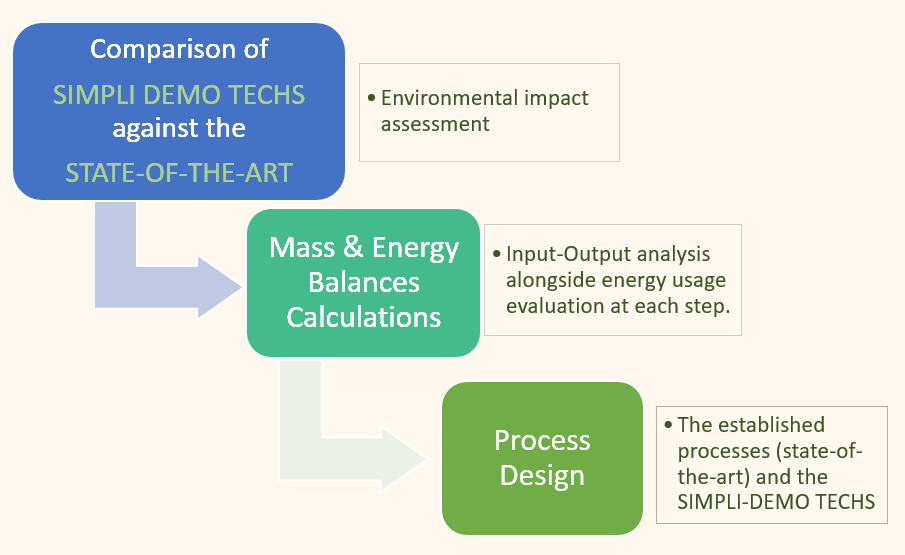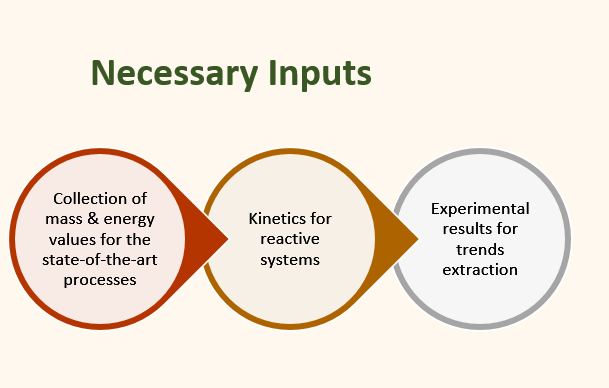Sustainability and techno-economic assessment
In addition to the process technology-driven work in SIMPLI-DEMO, the studies on sustainability and techno-economic assessment (located in WP5) contribute to the innovative improvement that can be reached by transitioning from a batch process to a modular continuous process. This WP also helps previous WPs in making technical decisions of where the processes can benefit most.
The first phase of the project was focused on the life cycle inventory (LCI) data collection. The LCI is obtained on the basis of experimental or computational data attained in WP1-3. Preliminary impacts (mainly but not limited to CO2 emissions) estimation is performed herein to identify the polluting drivers of each developing technology for each case. This analysis is used as feedback to the respective WPs, serving as decision maker for further technology optimization at the development stage.


Due to the lack of experimental data at the moment, our partner ArtistEng will use mass and energy balances calculations in order to calculate the environmental impacts and identify the polluting drivers. Thus, mass and energy balances were calculated for the state-of-the-art processes of each case involved in SIMPLI-DEMO project (moving towards the finalization of the process models). The latter processes will be used as references in order to evaluate the impact of the SIMPLI-DEMO technologies i.e., upon microwaves and ultrasound application, along with the continuous operation. In a later stage of the project, Life Cycle Assessment (LCA) is employed to assess the environmental impact of the SIMPLI-DEMO cases.
In the course of the impact and environmental assessment processes of the four SIMPLI-DEMO case studies, new technologies will regularly be evaluated and developed and assess the risks that they pose to the project. If a technology is identified that poses a significant risk, we will seek to bring forward project results to retain first mover advantage and encourage development of alternate applications and targeting of other markets.
The broader picture of the existing (as benchmark) and novel technologies (developed in WP1-4) in an industrial relevant environment is depicted. Full plantwide process models are initially developed for all case studies according to the basic principles of process synthesis and design and are based on inputs from WP1-4. The mass and energy balances calculated from the models are further used for the environmental impact assessment.
Leading partner


